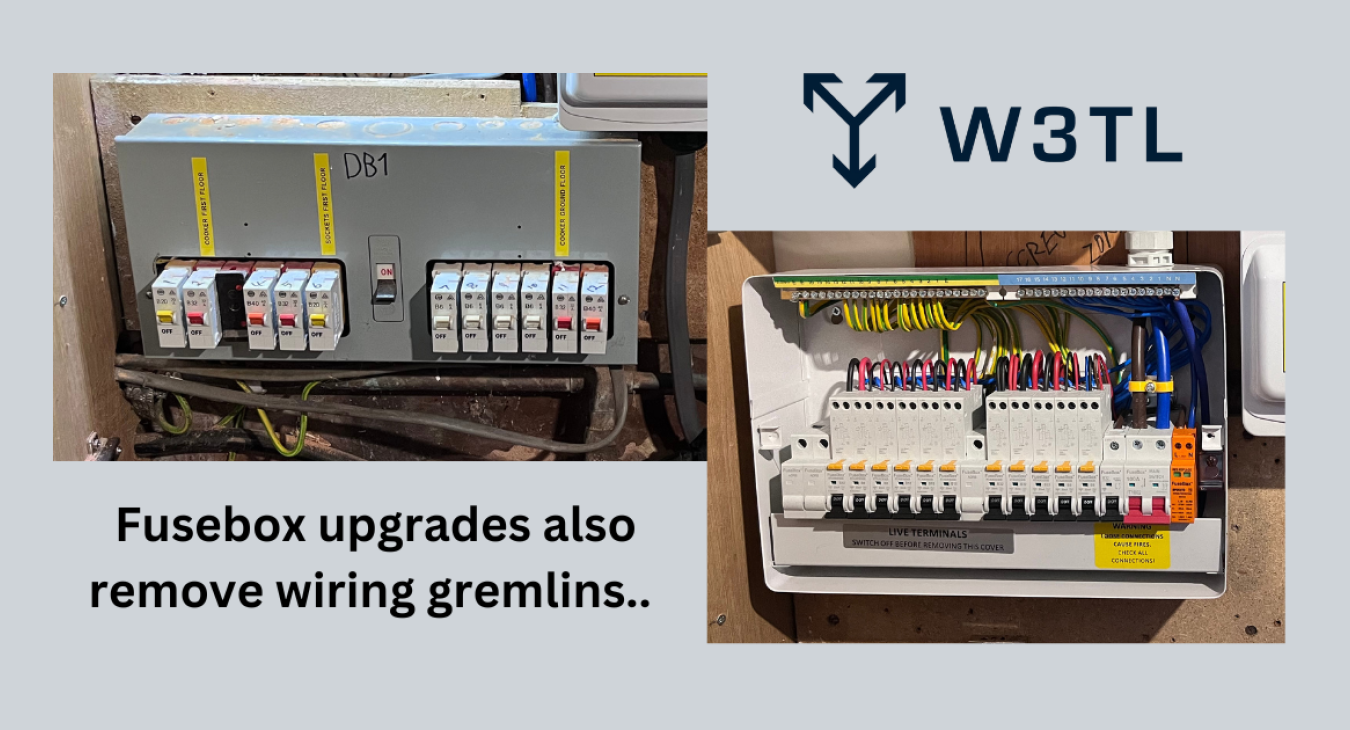Every Home Should Have At Least One Outside Light on a Sensor
In a cosy corner of our quaint little town,
Lived a man named Bob, whose week took a tumble down.
Late on a dark and chilly Monday night,
Bob mixed up his bins in the absence of light.
Tuesday saw him back late from his work,
As he fumbled for light, his phone hit the dirt.
Wednesday came along, and Bob's friends did arrive,
But in the pitch-black darkness took a painful dive.
Thursday's taxi struggled to find Bob's address,
In the darkness, it caused him a lot of distress.
Friday night tele arrived, the end of the week's mark,
His notice of no door to door sales, lost to the dark.
A knock at the door, what a frustrating intrusion
To spend 10 minuets discussing a strangers delusion
That's when Bob's friend, an electrician so skilled,
Shared a story that left Bob truly thrilled.
Lights that matched each day's rhyme and song,
Bringing convenience and joy, all week long.
With sensor lights guiding his way, Bob was sold,
Each rhyming day of the week, a story to be told.
In his heart, enlightenment began to blossom and bloom,
Outdoor lights offered more than just safety; they banished the gloom.
So, remember Bob's story, let it be your guide,
In the world of outdoor lighting, there's no need to hide.
From Monday to Friday, let convenience shine through,
Enhancing your life, making your days bright and true.
The end, my friend, with rhyme and delight,
May your days be well-lit, from morning to night!
Bob may not be real, but is story resonates with so many of my customers
Security lighting is really undersold when designing your electrical system, yet is has so much benefit that its a crime in itself that there are not more lights going in with security biased controls being fitted.
Installing a security light is often quite simple, considerably cheaper when compared with alarms or CCTV, and can be just the deterrent needed to stop a break in or unwanted loiterer.
But could that single security from the DIY shop be doing more. Not just a bit more, but become part of your homes wiring design for more than just a visual deterrent that says 'GO AWAY' once the sun is down?
I wanted to unpick the topic of security lighting as there is so much potential in the idea of sensor lights. Many sell themselves short when they install a sensor light as there are some really great ways to maximise the usability of these fixtures.
Essentially, lights controlled with a sensor are in essence, a security light. Something walks by when its dark and BANG! the light comes on.
But that doesn't mean that only lights sold as security lights are security lights. If we were to take the light and remove the sensor, it would just be a conventional light.
The same is true if we took a regular light and wired it to a sensor. A normal light becomes a security light.
Instantly the world of outdoor light fittings can become security lights. This means that you could pick any outdoor light fixture you wish, and turn it into a security light.
Lights that are sold as 'security lights' are often bright (for good reason) often square (for no good reason), and come with a sensor attached that quite often has only the basic level of control: a sensor.
But PIR sensors can be adjusted to make them better suited. With some security lights, they will come on when a cat walks past. Others need a stampede before they even think about coming on... very unreliable.
With standalone sensors, it is accepted that they will be physically bigger than the units bolted to security lights, so therefore there is room to put the adjusting knobs for light, movement, and time on, on the sensor.
If we are to install a standalone sensor, we can now put the sensor in one place, and keep your external light in another. For example: You want a light at the front of your house to light the garden path, except you want the sensor to be mounted on the corner of the house so it catches you sooner and turn the light on earlier.
With a standalone sensor, you are able to specify the sensor, the position, and its operation, and then you can specify a light fixture in the same way. A much more tailored option.
So there are some pitfalls: This setup will of course take longer to install. With a sensor, a light, and often a connection box, it means there are more connections to make.
Except with new security lights, they often have a fly lead that needs connecting somewhere, so more often than not, you need a connection box anyway.
There are more wires to this setup, whereas with a simple plug and play light you have just the live and the neutral. This means DIY is less achievable as it can be confusing identifying the cables as there are now 2 live wires.
But it can save wastage. Britain is a throw away nation. If its broken few things can be repaired economically. Therefore, if it breaks, we throw it away and buy a new one.
With a security light, if the sensor on the fixture breaks, often it will mean the fixture will be thrown away and a new one installed. But what broke? Was it the sensor or the light? It wouldn't matter. A perfectly good light thrown away because of a faulty sensor, and vice versa.
But having the two pieces of equipment separately installed, if there is a problem with either component, a replacement can be fitted. This could mean you save the light fixture in the event of a PIR failure. A good point to mention if you have light fixtures that need to match each other. Ever seen a series of different lights on a building?
Or different light bulbs used?
Security lighting doesn't only have to be used for security purposes. If you want a light in the garden, then install a light fixture of your choosing, and then fit a sensor to it to convert it to a security light.
Want to use the lights you have installed without the sensor they are connected to?
Simply turn the dials right down so it doesn't sense anything and wire an overriding switch into it. Very easy to do if you have a connection box fitted. Simply reconfigure the wiring. More expensive to do if you only have a security light fitted. Why?
Security lights are rarely wired to allow overriding controls. Sure, there is a method whereby you can switch on, off, on, off and it overrides. I'm sure that won't annoy you at all...
If you are thinking of fitting outside lighting and would like to explore the possibility of incorporating security features into them, then give us a call today: 01603 334007
















